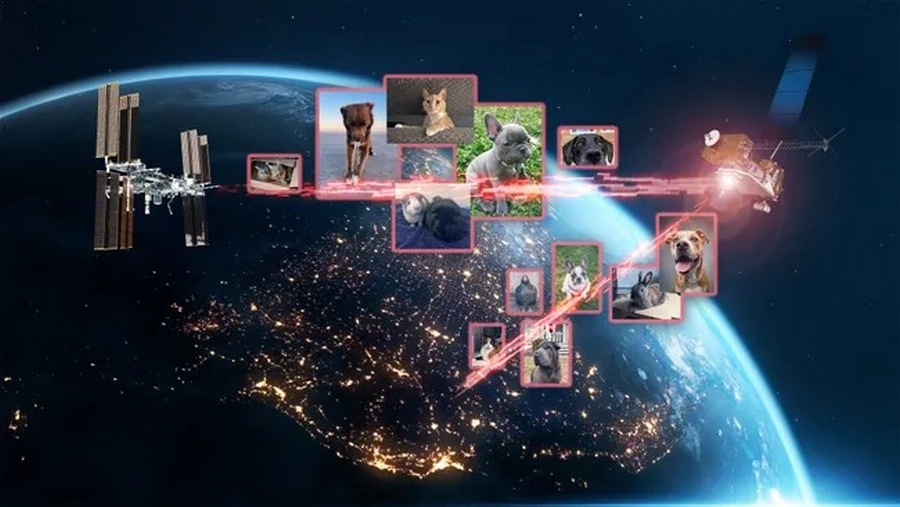Radio communication is still the primary method of data transmission in the space industry. But radio frequency communication may soon be replaced by optical communication using lasers, which has several advantages.

NASA currently tests advanced laser communication systems as part of the SCAN program. Researchers recently successfully tested laser communication between Earth and the ISS, where photos and videos of employees’ pets were used as test data transmissions. Specifically, images and video were sent from Earth to the Laser Communications Relay Demonstration (LCRD) transponder in geosynchronous orbit at a distance of 35,405 kilometers, and then from LCRD to the ILLUMA-T instrument on the International Space Station (ISS).
Laser and radio signals travel at the speed of light. However, laser relay systems can transmit much more data than radio signals. This can be compared to downloading images over 3G vs. 5G. Data was transferred at 1.2 Gbps, which is significantly faster than even most home WiFi connections. Therefore, lasers are much more effective for transmitting data during missions.
“The pet imagery campaign has been rewarding on multiple fronts for the ILLUMA-T, LCRD and HDTN teams. Not only have they demonstrated how these technologies can play an essential role in enabling NASA’s future science and exploration missions, it also provided a fun opportunity for the teams to ‘picture’ their pets assisting with this innovative demonstration,” said Kevin Coggins, deputy associate administrator and SCAN program manager at NASA Headquarters.
Interestingly, these images are not the first photos of pets to be sent into space using a laser. The lead belongs to Taters the Сat. The video was transmitted about 30.6 million kilometers from Earth to the Deep Space Optical Communications (DSOC) vehicle on NASA’s Psyche spacecraft using lasers.
Thus, the use of laser communication systems opens up new possibilities for data transmission in space, enabling fast and efficient communication during space missions. NASA continues to research and refine these technologies, which will provide important advances in future space exploration.
According to space.com


